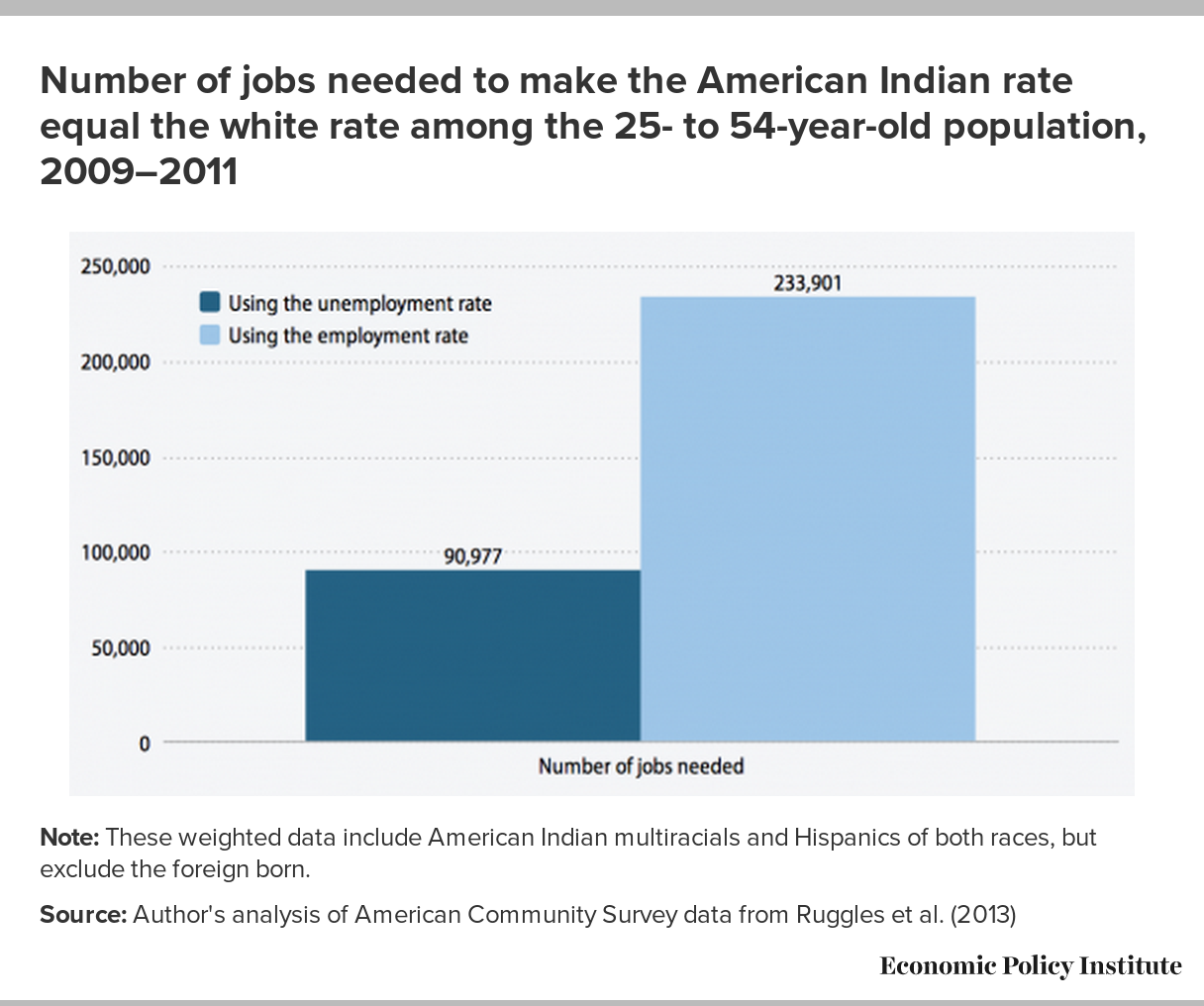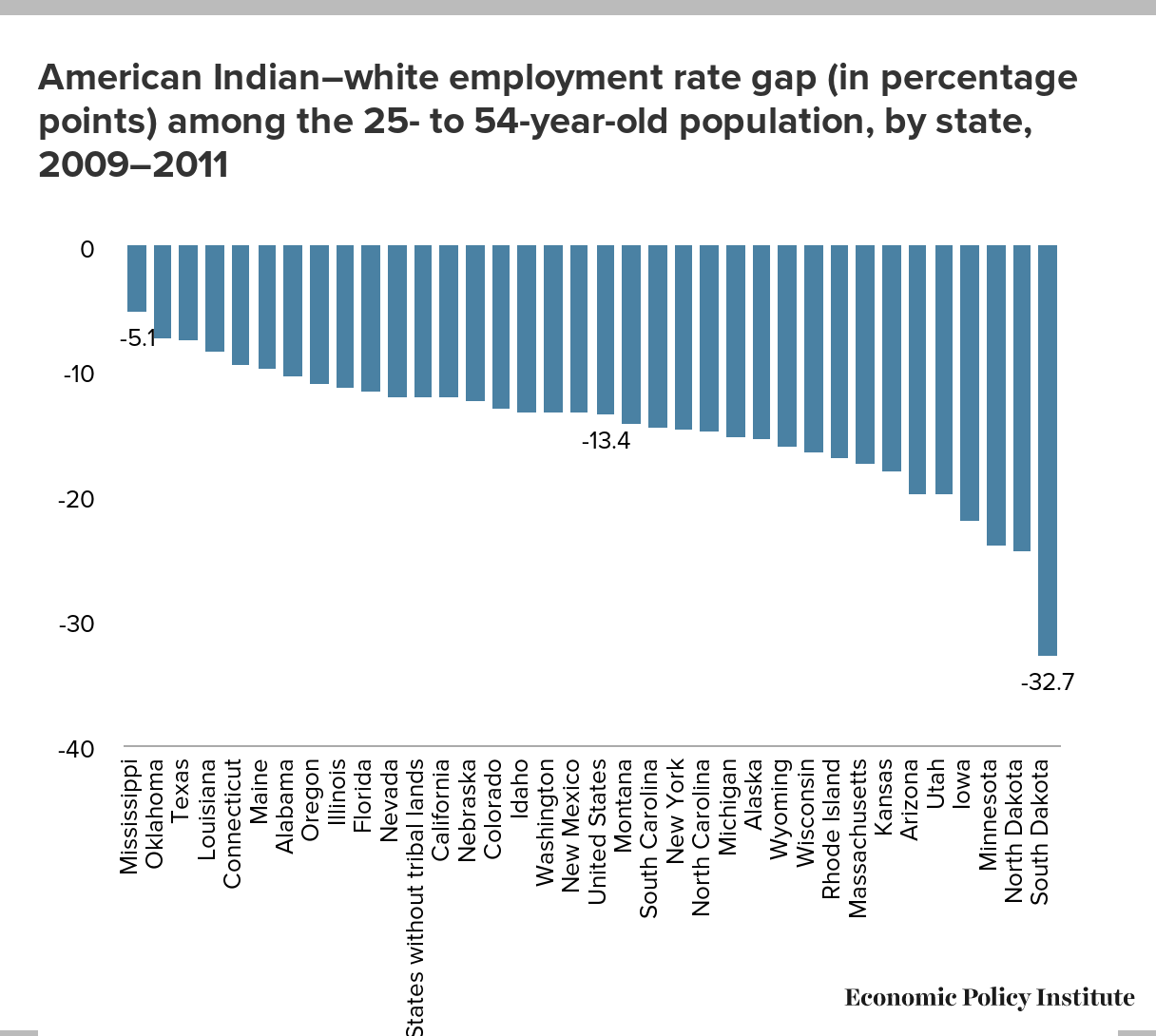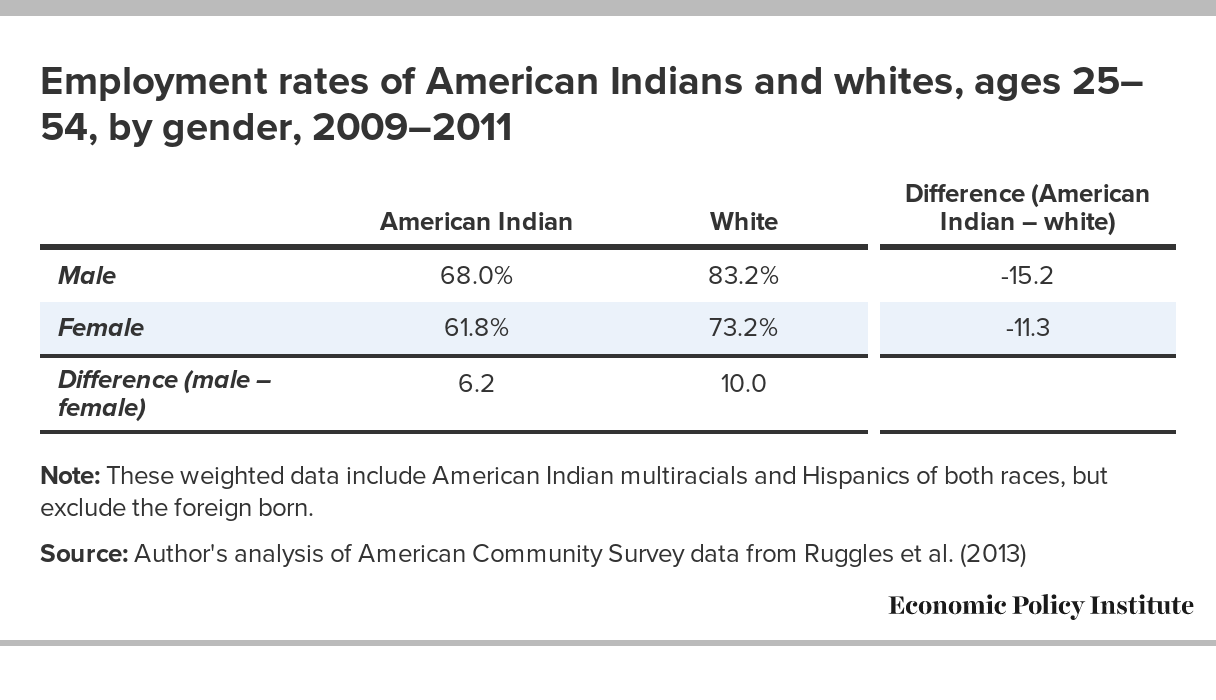
Beyond the Numbers: Unpacking Native American Employment Rates
In the vast and varied landscape of the United States, where economic indicators often paint a picture of national prosperity and innovation, a persistent and often overlooked disparity exists within one of its foundational communities: Native Americans. While the national unemployment rate fluctuates, generally hovering at historically low levels, the economic realities for many Indigenous communities present a stark contrast, revealing deep-seated challenges rooted in history, geography, and systemic barriers. Understanding Native American employment rates is not merely an exercise in data analysis; it’s an exploration of resilience, sovereignty, and the ongoing struggle for economic self-determination.
The raw numbers often tell a challenging story. According to various reports from the Bureau of Labor Statistics (BLS) and the U.S. Census Bureau, Native Americans and Alaska Natives consistently face significantly higher unemployment rates and lower labor force participation compared to the general U.S. population. While national unemployment might be around 3-4%, for many tribal nations, especially those in remote reservation areas, figures can easily reach double-digits, often exceeding 20% or even 50% in the most distressed communities. This disparity is further exacerbated by high rates of underemployment, where individuals work part-time when they desire full-time work, or are employed in jobs that do not fully utilize their skills and education.

Beyond unemployment, poverty rates among Native Americans are consistently among the highest of any racial or ethnic group in the United States. Many Native families live below the federal poverty line, grappling with limited access to essential services, adequate housing, and nutritious food. These economic challenges are not merely statistical anomalies; they are direct consequences of centuries of colonial policies, land dispossession, forced assimilation, and broken treaties.
The Weight of History and Geography
To comprehend the current state of Native American employment, one must acknowledge the profound impact of historical trauma and policy. The Indian Removal Act, the Dawes Act, and the forced relocation onto reservations stripped Indigenous peoples of their traditional lands, resources, and economic systems. These actions severed vital connections to land-based economies – hunting, fishing, farming, and trade – that had sustained Native communities for millennia.
"Our economic challenges today are deeply intertwined with the historical injustices our ancestors faced," says Dr. Sarah Yellowbird, a professor of Indigenous Studies. "When you take away a people’s land, their resources, and their self-governance, you cripple their ability to thrive economically for generations. The ripples of that trauma are still felt in every aspect of community life, including employment."
Geographic isolation is another critical factor. Many of the 339 federally recognized Indian reservations are located in rural, remote areas, far from major economic centers and transportation hubs. This isolation presents formidable barriers to economic development:
- Lack of Infrastructure: Poor road networks, limited access to high-speed internet, and insufficient utilities (water, electricity) deter potential investors and hinder the growth of local businesses. The "digital divide" is particularly pronounced, limiting access to remote work opportunities, online education, and e-commerce.
- Limited Market Access: Businesses on reservations often struggle to reach larger consumer markets or supply chains, making it difficult to compete.
- Sparse Population Density: Low population density can make it challenging to attract and sustain a diverse range of businesses and services, leading to fewer local job opportunities.
- Human Capital Flight: Young, educated tribal members often leave reservations in search of better educational and employment opportunities, leading to a "brain drain" that further limits local capacity for development.

Educational Disparities and Systemic Barriers
While significant strides have been made, educational disparities continue to impact Native American employment. Historically underfunded schools on reservations often lack the resources, qualified teachers, and diverse curriculum found in well-resourced districts. This can lead to lower graduation rates and less preparedness for higher education or specialized vocational training.
Furthermore, discrimination and implicit bias persist in the broader job market. Native Americans can face challenges in hiring processes, promotions, and wage equity, often battling stereotypes and a lack of understanding from non-Native employers. Access to capital is another significant hurdle; tribal members and businesses often face difficulties securing loans from traditional financial institutions due to complex land ownership structures on reservations (trust land), which can make collateral problematic.
Resilience and the Rise of Tribal Enterprises
Despite these formidable challenges, Native American communities are not merely passive recipients of their circumstances. A powerful narrative of resilience, self-determination, and innovative economic development is unfolding across Indian Country. The assertion of tribal sovereignty, recognized through federal law and treaties, has been the cornerstone of this economic resurgence.
A prime example is the Indian Gaming Regulatory Act (IGRA) of 1988, which allowed tribes to operate casinos on their lands. Gaming has revolutionized the economies of many tribal nations, generating billions of dollars in revenue annually. This revenue is not distributed to individuals but is reinvested by tribal governments into essential services and economic diversification:
- Job Creation: Gaming operations directly employ thousands of tribal members and non-Natives, often providing competitive wages, benefits, and training opportunities.
- Infrastructure Development: Gaming revenues fund the construction of roads, schools, health clinics, housing, and utility upgrades on reservations.
- Social Services: Funds support education programs, healthcare initiatives, elder care, and cultural preservation efforts.
- Diversification: The profits from gaming have allowed tribes to invest in a wide array of non-gaming enterprises, creating more stable and diversified economies.
Beyond gaming, tribes are actively pursuing economic development in diverse sectors:
- Tourism and Hospitality: Many tribes leverage their rich cultural heritage and natural landscapes to develop cultural tourism, resorts, hotels, and ecotourism ventures. "Our culture is our greatest asset," says Chief Robert Eagle Feather of a Southwestern tribe that has invested heavily in cultural tourism. "By sharing our traditions and our lands responsibly, we create jobs that honor our past and build our future."
- Energy Development: Tribes are increasingly involved in oil and gas extraction, but also in renewable energy projects like wind farms and solar arrays, capitalizing on their land assets and promoting sustainable development.
- Manufacturing and Construction: Tribal enterprises are engaged in manufacturing goods, building materials, and undertaking large-scale construction projects, often for their own communities but also for external clients.
- Agriculture and Natural Resources: Revitalizing traditional agricultural practices, sustainable forestry, and water management projects are creating jobs and food security.
- Healthcare and Education: Tribal governments are often the largest employers on reservations, running their own hospitals, clinics, schools, and tribal colleges, providing essential services and professional opportunities.
- Technology: Some tribes are investing in broadband infrastructure, creating tech hubs, and fostering digital literacy, opening doors to remote work and the digital economy.
The Role of Federal Programs and Entrepreneurship
Federal agencies like the Department of Commerce’s Economic Development Administration (EDA), the Department of Housing and Urban Development (HUD), and the Bureau of Indian Affairs (BIA) provide grants, loans, and technical assistance to tribal nations for infrastructure projects, business development, and workforce training. These programs, while often underfunded, are crucial catalysts for economic growth.
Moreover, a burgeoning spirit of entrepreneurship is evident within Native American communities. Individuals are launching small businesses, from artisanal crafts and traditional foods to construction companies and IT services, often driven by a desire to serve their communities and create local opportunities. Organizations like Native American Business Association and various tribal economic development corporations provide support, mentorship, and access to resources for these emerging entrepreneurs.
"Starting my own business here wasn’t easy," shares Maria Tallchief, who runs a successful catering company on her reservation. "We faced challenges with supply chains and initial capital, but the community support was immense. Every dollar we earn stays here, creating jobs for our people and contributing to our collective well-being. It’s about building a future, not just making a profit."
Challenges Remain, but the Path is Clear
Despite the remarkable progress, significant challenges persist. Not all tribes have the geographic advantage or resource base to replicate the success of gaming. Infrastructure deficits remain a monumental hurdle for many. The lingering effects of intergenerational trauma, including health disparities and social challenges, continue to impact workforce readiness and stability.
However, the trajectory is clear: Native American employment rates are intrinsically linked to the ongoing assertion of tribal sovereignty and self-determination. When tribal nations have the authority and resources to make decisions about their own economic future, they create culturally relevant, sustainable pathways to prosperity. This means continued investment in infrastructure, education, healthcare, and diversified economic ventures. It means fostering entrepreneurship and respecting tribal governance.
The narrative of Native American employment is complex, marked by historical adversity but also by profound resilience and innovative progress. It is a story not just of numbers, but of people, communities, and the unwavering spirit to build a vibrant and self-sufficient future on their own terms. Recognizing and supporting these efforts is not just a matter of economic justice, but a critical step towards a more equitable and prosperous nation for all.


